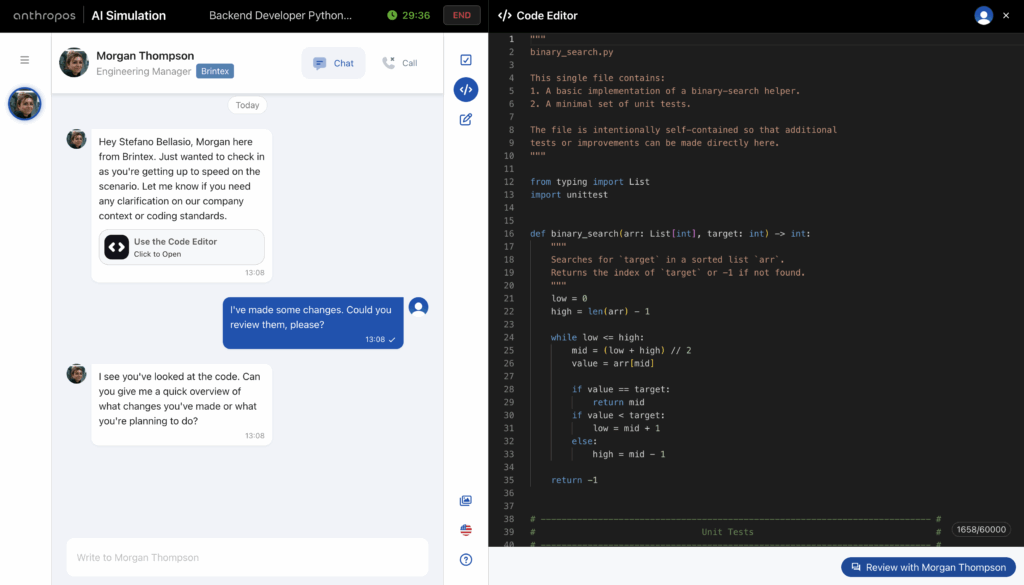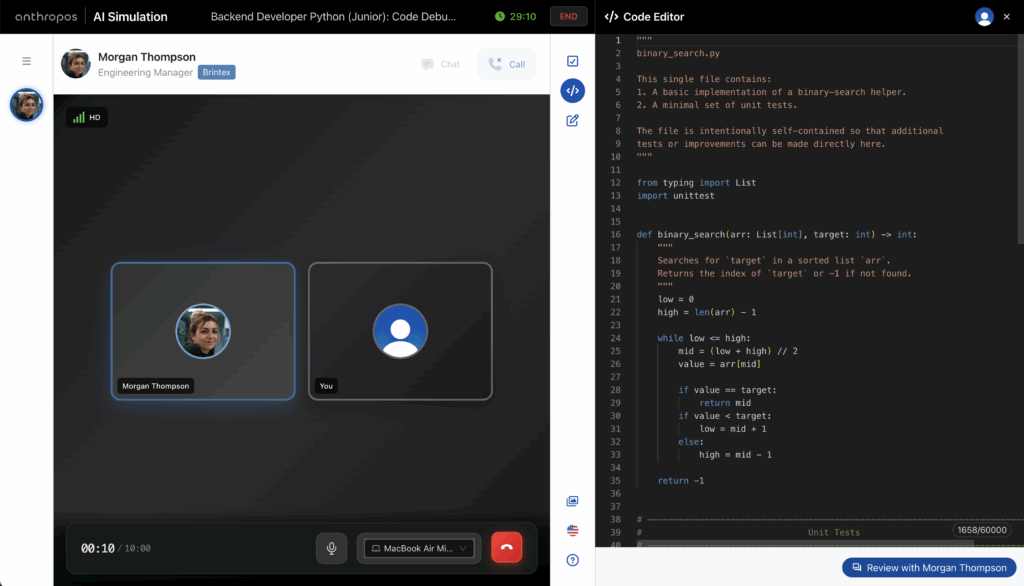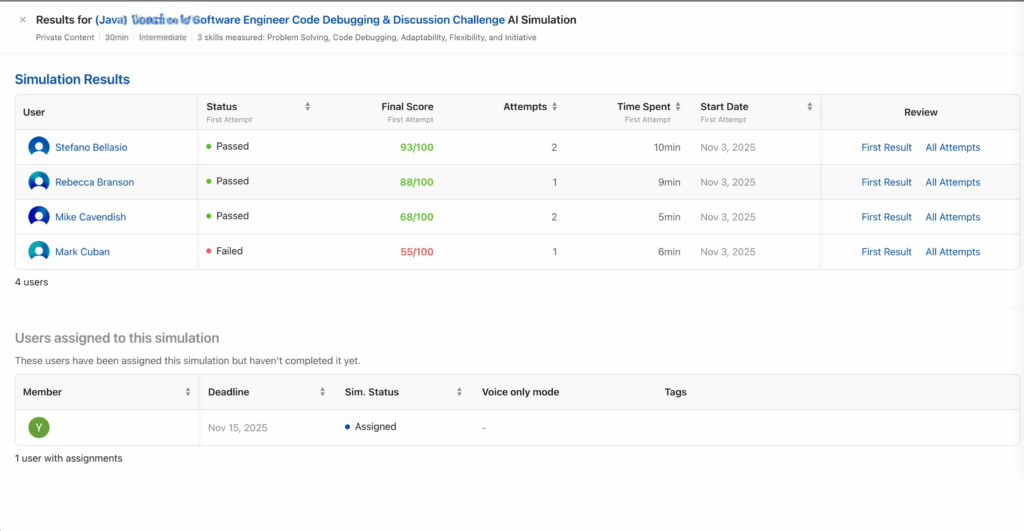Hiring engineers has never been easy, but in 2025 it’s becoming one of the most complex challenges for companies across industries. The rapid evolution of technology, coupled with the widespread use of AI-assisted tools, has fundamentally changed how software is built—and how developers should be evaluated. In a world where AI is helping developers being faster and more productive, the real skills they need are mostly soft and interpersonal skills as they quickly get exposed to more departments and stakeholders.
Traditional hiring methods are falling behind. Resumes and interviews, once the cornerstones of recruiting, now reveal very little about a candidate’s real capabilities. Coding tests, once seen as an effective filter, often fail to capture the soft and cognitive skills that define high-performing engineers.
For corporate managers and HR leaders, the problem is clear: how do you accurately assess technical skills when the very nature of technical work has changed? How can you tell whether a developer will thrive in your team, adapt to your tools, and grow with your business?
Why Assessing Technical Skills Is So Difficult
Technical hiring is fundamentally different from other types of recruitment. The skills involved are not only specific and complex, but they evolve quickly. A candidate may master a programming language today and find it outdated tomorrow. Moreover, technical success depends on much more than syntax knowledge or speed in solving algorithmic puzzles.
True engineering competence is multidimensional. It includes:
-
Technical depth: understanding architecture, scalability, security, and testing.
-
Problem-solving: the ability to break down complex challenges into manageable steps.
-
Collaboration: knowing how to work with product, design, and QA teams.
-
Communication: explaining technical concepts to non-technical stakeholders.
-
Adaptability: learning new frameworks or technologies as the business evolves.
Assessing this full spectrum is difficult, time-consuming, and often subjective. Many companies rely on live coding sessions or take-home assignments, but these formats come with significant drawbacks.
Traditional Assessment Methods—and Their Limits
Most organizations still rely on one or more of the following methods to evaluate technical talent. Each has merits, but also clear weaknesses.
1. CV and portfolio reviews
A candidate’s resume can provide useful context, such as education, previous employers, and project history. However, resumes increasingly lack reliability. With AI tools helping candidates write or optimize CVs, it’s hard to distinguish genuine experience from polished presentation. Portfolios can help, but they rarely offer insights into collaboration, problem-solving process, or adaptability.
2. Coding tests and algorithm challenges
Tools like HackerRank or Codility popularized this method, offering a way to benchmark technical ability at scale. But these tests often measure only narrow problem-solving under pressure. They don’t reflect how engineers perform in real-world environments—where collaboration, architecture design, and trade-offs matter more than perfect code efficiency.
3. Take-home assignments
These offer more realism but introduce logistical problems: they take time to complete, delay hiring decisions, and sometimes disadvantage candidates who can’t dedicate hours outside of work. Moreover, they still don’t reveal how someone communicates or works with a team.
4. Live coding interviews
Once considered the “gold standard,” live coding interviews have started to show their cracks. They’re expensive—typically involving two engineers for at least an hour—and distracting for existing teams. Candidates often feel anxious performing under observation, which affects their performance. While live sessions do show how people think and explain their choices, they’re hard to scale and inconsistent across interviewers.
Each of these methods captures a fragment of what makes an engineer effective, but none offers the complete picture. What’s missing is the ability to observe real behavior in realistic conditions—without the overhead, bias, or inefficiency of traditional formats.
The Rise of Simulation-Based Assessment
Simulation-based hiring is emerging as the next evolution in technical evaluation. Instead of asking candidates to describe what they would do, simulations allow them to show what they can do.
AI-powered simulations recreate authentic work scenarios—debugging a live system, handling a project request from a product manager, or explaining a technical decision to a non-technical stakeholder. They bridge the gap between technical and soft skills, revealing how candidates behave in situations that mirror the real job.

For technical roles, this approach provides a much richer, data-driven perspective. It allows companies to see:
-
How a developer structures code and thinks about scalability.
-
How they communicate with team members or clarify ambiguous requirements.
-
How they balance speed, quality, and pragmatism under realistic constraints.
It’s a shift from theoretical testing to practical performance evaluation—and it’s transforming how modern companies hire.
How Anthropos Transforms Technical Skill Assessment
Anthropos is one of the few platforms purpose-built to bring simulation-based hiring into technical candidate assessment. It combines realistic engineering scenarios with structured AI-driven insights, giving hiring teams a clear, objective view of each candidate’s capabilities.
With Anthropos Hiring, companies can invite candidates to complete AI job simulations that replicate real engineering tasks. These simulations go beyond code correctness to measure how candidates think, collaborate, and communicate throughout the process.

An example of a simulated conversation to assess soft skills inside a Java software engineer simulation
For example, a candidate might be asked to build a small feature, fix a bug in an existing repository, or design a system module. During the simulation, AI actors—such as a simulated product manager or teammate—can ask clarifying questions, raise issues, or request changes. This creates a realistic, dynamic environment that shows how a developer behaves in context.
At the end of the simulation, the hiring team receives structured data, not subjective impressions: how the candidate approached the problem, communicated under pressure, and justified decisions. This enables better comparisons and more confident hiring decisions—without the time cost of multiple live interviews.

An example of candidates that just completed a software engineering simulation for Java
Moreover, Anthropos includes AI-based detection of external tool usage, showing whether and how candidates used large language models like ChatGPT during their work. Instead of penalizing them, companies can decide whether that aligns with their culture and expectations.
It’s transparency built for the era of AI-augmented development.
Beyond Hiring: Building a Stronger Engineering Organization
What makes Anthropos particularly powerful is that it doesn’t stop at hiring. The same platform supports ongoing upskilling, reskilling, and internal mobility through its Workforce module, a real employee upskilling platform by itself. Engineering managers can assess existing team members, identify skill gaps, and build tailored learning paths using the same simulation-based approach.
This means companies don’t just hire for today—they build capabilities for tomorrow. In an environment where technology evolves faster than any job description, Anthropos helps organizations keep their teams ready, relevant, and resilient.
Assessing technical skills has always been about more than code. It’s about understanding how people think, communicate, and adapt when faced with real challenges.
Simulation-based assessment, as delivered by Anthropos, gives companies the visibility they need to hire confidently, train effectively, and future-proof their teams. By bringing real-world work into the hiring and development process, Anthropos helps organizations move from guesswork to evidence—and from risk to readiness.
It may also interest you
November 12, 2025